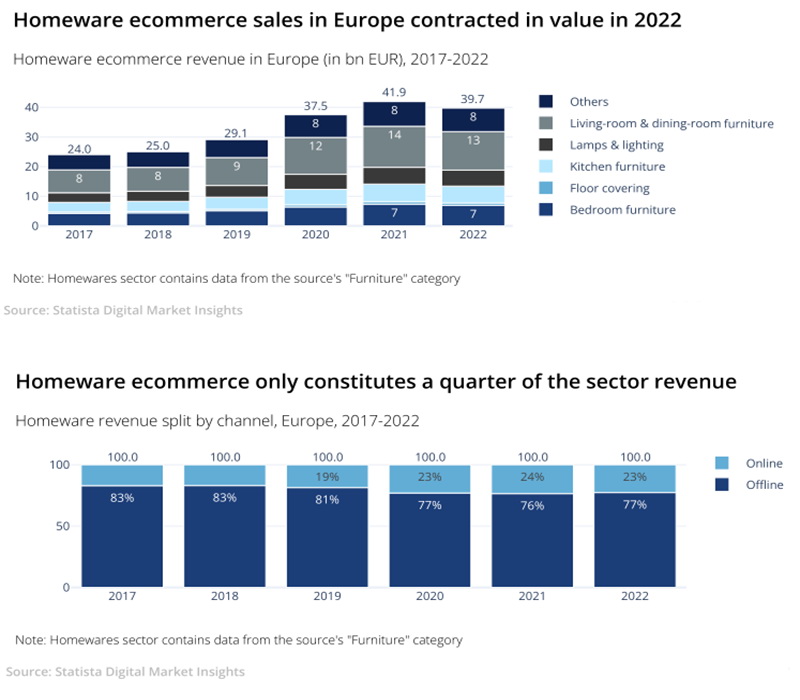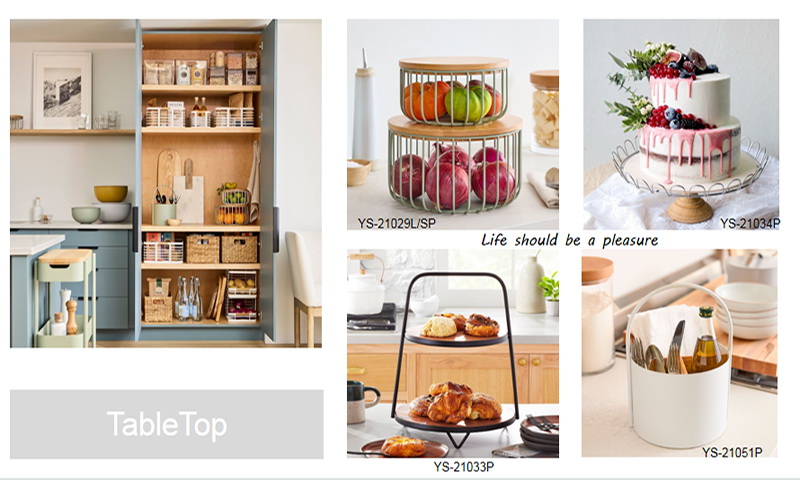2023 European Home Furnishings Online Sales Trends
In 2023, European markets are facing high inflationary pressures and people are prone to put off their commodity purchase plans. Home furnishings are broadly categorized as non-fixed furnishings or appliances for living rooms, bedrooms, dining rooms, and kitchens, but excluding kitchen appliances and built-in kitchen furniture.
Data show that the entire European home furnishing industry in 2022, the market size of nearly 40 billion euros, living room and dining room furniture major category market, the market size of about 13 billion euros.

Household products tend to be large and relatively expensive, and people often need to try them out before they buy them, which means that many people prefer to stick them in a physical store; on the other hand, smaller home furnishings, such as cushions, rugs,kitchen storage racks, Fork Holder For Kitchen, Coffee Pod Holder and other more portable types of products predominate; and furthermore, home furnishings tend to rely on the store as well, and consumers often come across such products when looking for other goods and feel the urge to buy them.

Across Europe, the consumer market for home furnishings stands out in Italy, Spain and Romania, where almost 50% of home furnishings consumers choose to shop online. Online markets such as the UK and France also saw particularly impressive sales of furniture items.
However, consumers in the Nordic markets do not seem to be keen on online shopping, with mediocre online sales performance in the home furnishing category, which could be due to the relatively high prices of goods in these markets, combined with the fact that each country attracts fewer online consumers overall.
Another possible reason could also lie in the fact that some of the countries have more significant aging populations, with Sweden's average age in 2022 at around 41 years old, and the largest proportion of its population over 70 years old. The same situation is seen in Finland and Denmark.
Given that Millennials and Gen Xers are more eager to buy home products online, while Baby Boomers and Gen Zers are less inclined to buy online.
In terms of income, consumers with higher incomes spend more on home furnishings, and those with higher incomes usually have bigger houses and are more inclined to buy more to decorate their homes.
Notably, more women than men buy home furnishings online, suggesting that they are more likely than men to be in charge of home décor, and that they are better at transferring their preference for online shopping, especially when it comes to fashion, to home furnishings purchases.
In the regular online channel for home furnishings, European consumers value factors such as cheaper prices, home delivery services and convenience.
Over the past five years, online retailers vertical to the home furnishings sector have sprung up to fill this growing niche gap, with high-priced products emerging. This has also inspired many traditional brands to fully embrace the e-commerce channel to adapt to the status quo and grow their online business in the future.
To this day, trendy home décor is still one of the hottest selling products, bringing personal taste and quality of life into the home through well-designed home décor. Stay tuned to Foshan ever rising for home decorations.
